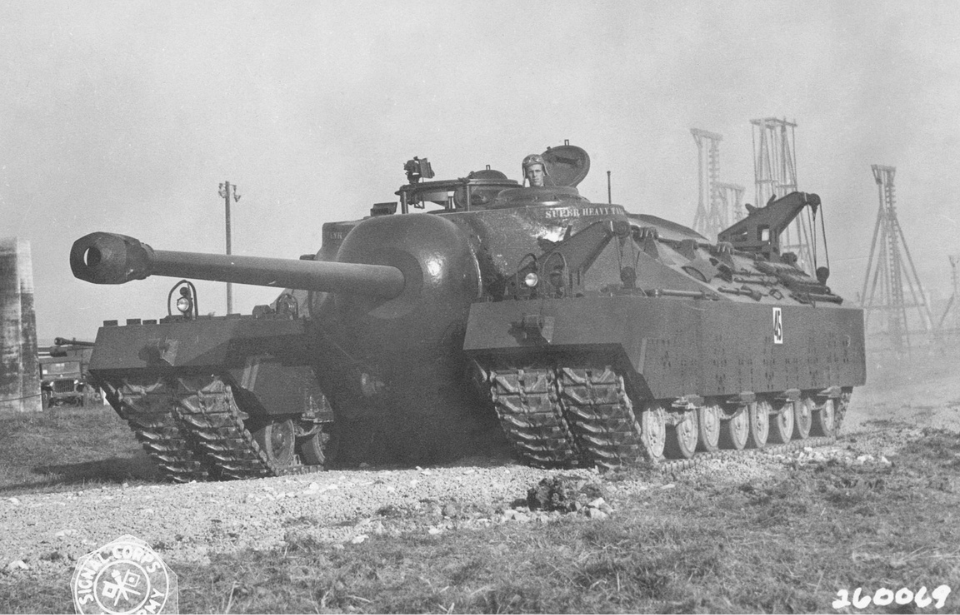Tanks were incredibly important during World War I and became even more so during the Second World War. During the latter, the United States realized it may not be able to secure a win without additional firepower, which resulted in the development of the T28 Super Heavy Tank.
Only two prototypes of the military vehicle were built before the project was ultimately terminated. One was damaged during testing, and instead of the other being destroyed or stored somewhere safe, it wound up lost for decades.
The US wanted to match the Germany Army’s powerful tanks
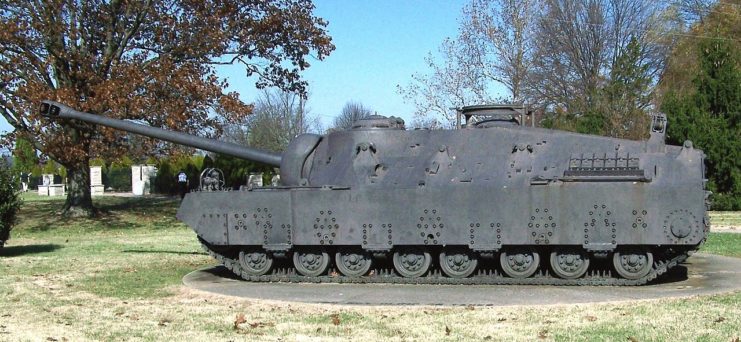
The US and its Allies were ultimately victorious in World War II. Along the way, they learned many lessons about conflicts and how they may be conducted in the future.
Even while the war was being fought, the US military was looking to close the gap. One thing the German Army had against the Allied forces was their tank superiority; the vaunted Siegfried Line had made it near impossible for the Allied forces to break into Germany.
Beginning in 1943, the US began devising plans for a new tank, which would later be designated the T28 Super Heavy Tank. The new vehicle was intended to be heavy, with enough power to both break through enemy lines and provide enough security to protect those within the tank.
The United States begins work on developing prototypes
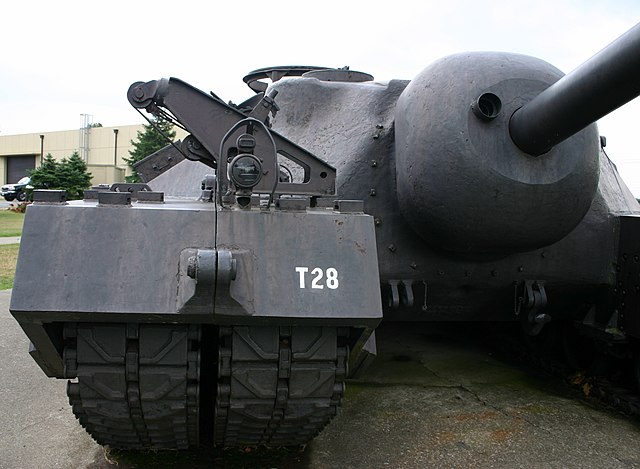
In March 1944, the decision was made to build five of the T28 Super Heavy Tanks, which would each be outfitted with an 105 mm T5E1 anti-tank gun for their main armament and a .50 caliber Browning heavy machine gun as their secondary weapon. The vehicle was built with a much thicker body than other tanks of the era. The metal, as thick as 12 inches at some points, was thought to be durable enough to protect against anti-tank fire.
Issues arose, however, during the construction process. Due to the T28’s size of 95 short tons, the tank could only achieve a maximum speed of around 8 MPH. As well, there were serious problems when it came to driving over obstacles.
The T28 Super Heavy Tank wasn’t really needed at all
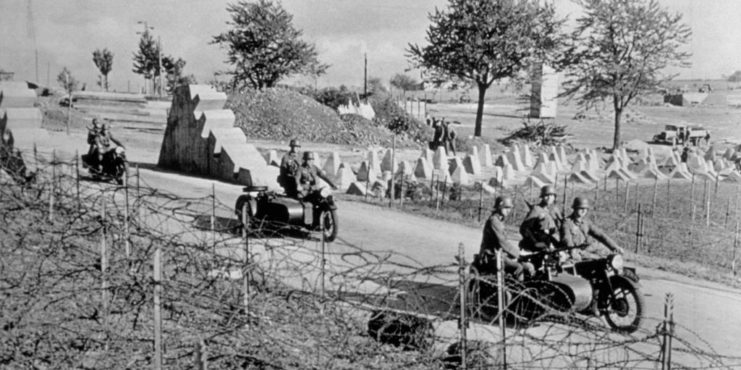
As aforementioned, the initial plan for the T28 Super Heavy Tanks was to use them to smash through the Siegfried Line. However, beginning in mid-1944, the Allied forces began an all-out attack on the defensive line, and by early 1945, all of the bunkers along it had fallen.
Those in charge decided the T28s would now be used on the Japanese mainland. However, Japan surrendered before the tanks could be sent overseas, following the bombings of Hiroshima and Nagasaki. This led the US government to scrap any plans to further develop the vehicles. Only two prototypes were ever completed, with one becoming heavily damaged during testing at Yuma Proving Ground and ultimately sold for scrap.
The remaining T28 Super Heavy Tank was lost for decades
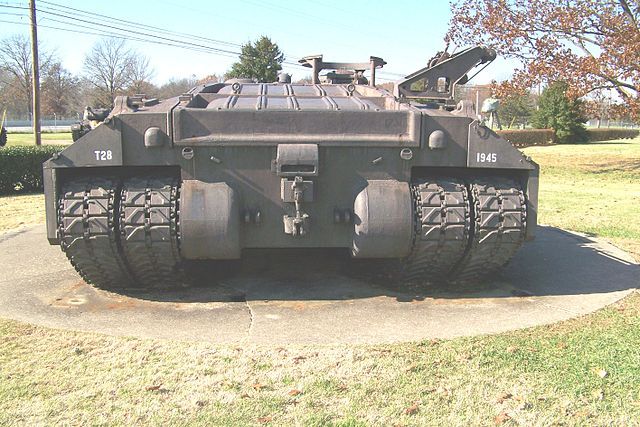
With the way the Second World War ended, the T28 Super Heavy Tank was never really necessary. More importantly, testing of the vehicle revealed issues that would certainly have showed themselves on the battlefield. Over time, the US military decided it would be best to go with a tank that wasn’t super heavy, resulting in the choosing of a lighter and more versatile design.
In the years that followed, the US took part in wars in both Korea and Vietnam, and the T28 was nowhere to be seen. The WWII-era design had been completely forgotten about.
The T28 Super Heavy Tank was eventually found in the weeds
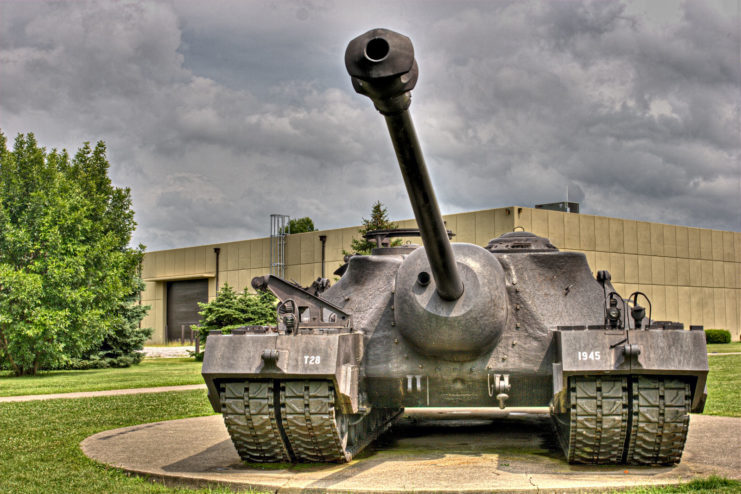
The military was so focused on new tank models that, somehow, the remaining T28 Super Heavy Tank prototype was completely misplaced. It wasn’t until 1974, 27 years after it went missing, that it was located in a field at Fort Belvoir, Virginia. It had been left to the elements for so long that weeds had started to grow into it.
More from us: A British Challenger 1 Set the Record for the Longest Tank-on-Tank Kill in 1991
Since its discovery, the prototype has been treated with much more respect. It was transferred to the General George Patton Museum at Fort Knox, Kentucky and remained there for a number of years, before being moved to Fort Benning, Georgia’s Patton Park.
